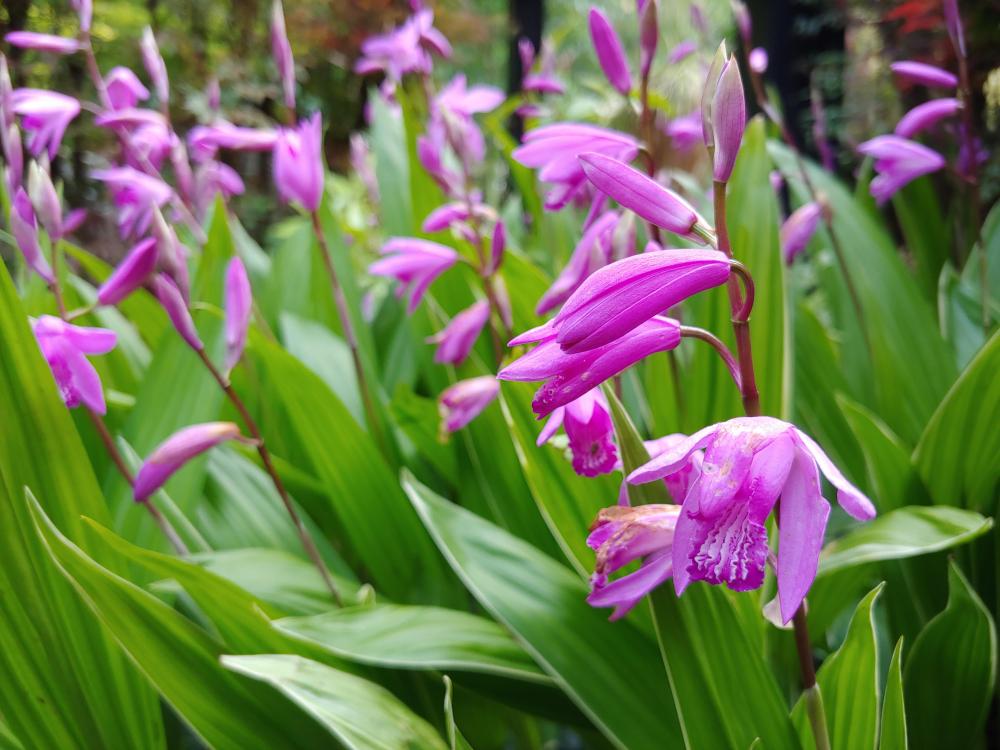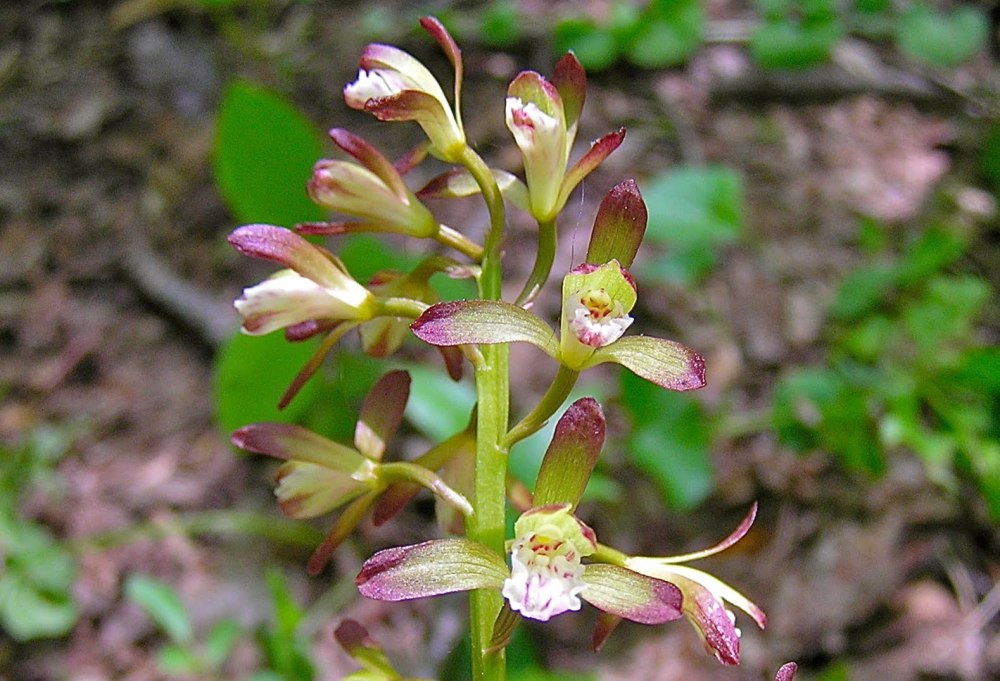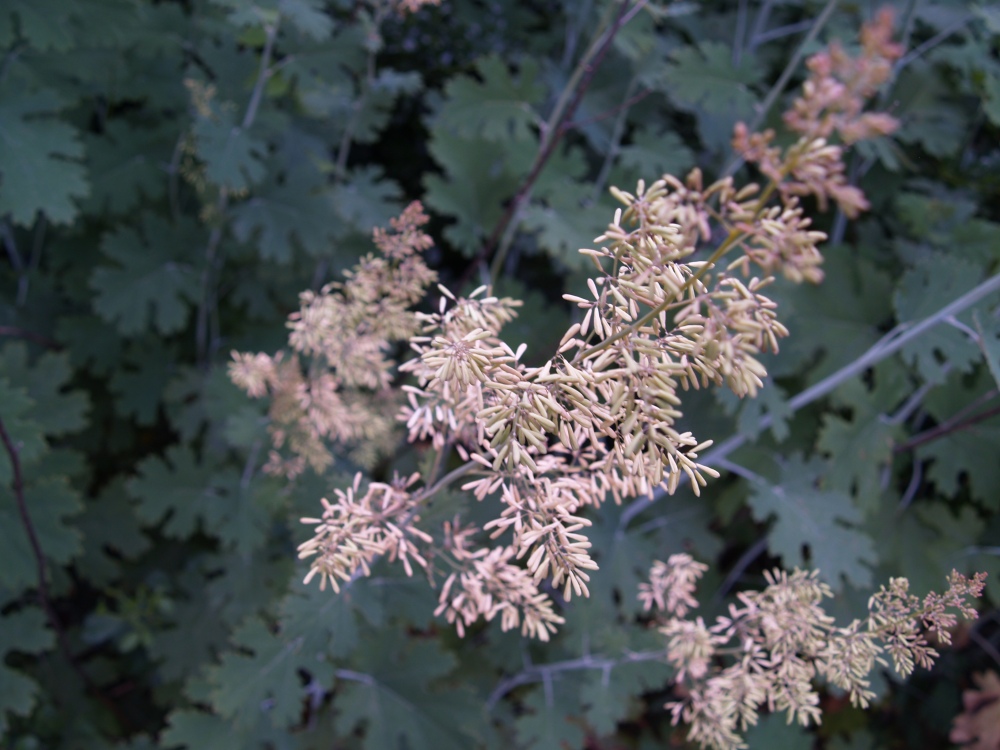Yesterday, several of what I figure to be tough as nails terrestrial orchids (Bletilla striata, below) were dug and transplanted. I have no doubt this is best done immediately following its imminent flowering, but these few had strayed into a crowded clump of sedge (Carex), and occasionally tasks must be undertaken when the mood is high, never mind the risk.

I recall my hesitation in purchasing the first few orchids for what seemed a prohibitive price, and while clumps do not multiply as rapidly as, for instance, hellebores and toad lilies (Tricyrtis), there were sufficient numbers a year ago that handfuls were dug to share with our sons. With the initial success, I’ve been more comfortable making subsequent purchases of orchids in varying colors that have been comparably successful. Now, I don’t suppose I’ve planted one of every orchid available, but there are more than enough so new arrivals must be shoehorned into tight spaces.
The nine or ten thick stalked orchids were entangled in the sedge clump so that the combination was dug, then the grass was pried away from the orchids’ roots and disposed of, since this sedge will quickly grow back to fill where the digging was done. Not that this mattered much, since this was a very spur of the moment, get it done before I forget about it type task, but rain had further saturated the soil in the morning and more was forecast for the evening. If there was any danger in transplanting the orchids at this stage, the rain and already damp ground would lessen the risk.
Today, the orchid transplants appear not to have noticed the disruption, and the new location just above a stone wall in partial sun should be ideal. The original clump, now one of several, will flower in a few days, I believe along with ones that are newly transplanted.

I notice also that two Putty root orchids (Aplectrum hyemale, above) have elongated flowering stalks, though others do not. Again this year, the orchids’ single leaf will fade as the flower develops, then will reappear in October. The short stalked Putty root is not showy by comparison to other orchids, and in the forest it is hardly seen, but I proudly point it out to visitors, in flower or not as an often overlooked native found in local forests with an unusual habit.

Finally, I see the last remnant of what was once an overly vigorous and wide spreading clump of plume poppy (Macleaya cordata, above). Further evidence of the changes taking place over three decades, the nearly invasive poppy lost out to a group of three yellow tipped Japanese cedars (Cryptomeria japonica ‘Sekken-sugi’) that now tower above the garden, and while I don’t wish to return the plume poppies to their previous state of glory, I prefer not to lose them entirely. The remaining plant is barely a single stalk, with a tiny root, so it might be lost in the transplant, but it’s been moved to a slightly sunnier spot where I hope it will take.
What’s your culture for the putty root? Did you amend your soil?
I never amend soil in planting, for anything. The putty roots were planted in as close to native conditions as possible, in undisturbed ground with a cover of shredded leaves. I’d read that they have a symbiotic relationship with beech or maple, but the best spot for them was under a Japanese maple, so there they are. They don’t really grow, with only one leaf each year, so the only way to evaluate them is the flower. There are flowers on the two more mature orchids, but a leaf only on smaller roots that were planted.
Bletilla striata was supposedly invasive. That is what we were told about it it in school. I had never seen it before. I appreciate how it spreads, but have not had any problems with it so far. Of course, I have not let it get very far either. I would like to add some white to it if I come across any.
I have a small group of white out here somewhere, though a number of flowers were damaged by the recent freeze so it’s possible I won’t see them this year. They are plenty cold hardy, and a frost doesn’t bother them at all, but when temperatures drop several degrees below freezing in mid May, there will be some trouble.
That seems to be a common theme recently.